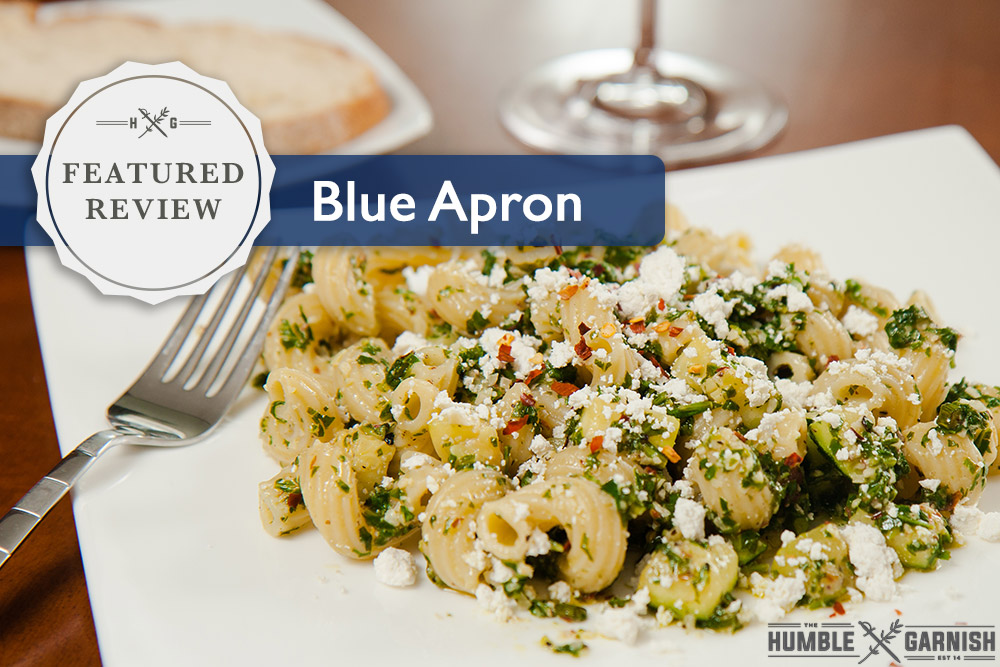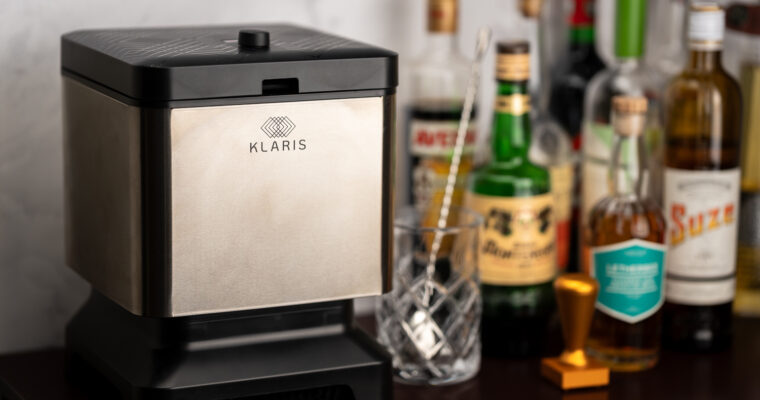Those of us that frequently cook are always looking for ways to simplify meal planning and reduce the amount of time cooking. Personally, I try to avoid processed foods as often as possible, and that tends to mean I’m either spending a few hours a week cooking my own meals or going out to eat at local establishments. Over the past few years some new services have popped up with promises of making the whole process simpler. Blue Apron was the first to the market, and after receiving a trial of their service I decided I’d share my thoughts. Over the course of two weeks, I prepared a selection of Blue Apron’s meals and evaluated them based on convenience, freshness, simplicity, and cost of the service.
Founded in 2012, Blue Apron is just one of several services that I’d describe as a hybrid between a grocery delivery service and meal planning service. In three years, Blue Apron reached 5 million meal deliveries a month and an estimated value of $2 billion. With Blue Apron, you first choose one of two meal plans – the two-person plan with 3 (two-serving) meals per week, or the family plan with either 2 or 4 (four-serving) meals per week. The next step is selecting your desired meals from Blue Apron’s weekly menu which contains six new options every week. The six weekly options tend to follow a pattern of including a meal with the following choices: beef or pork, chicken, seafood, pasta, a sandwich-type item, or a “wild card” with some ethnic/unique flair. As you choose your meals, other meals will become unavailable – calculated so that Blue Apron is able to make a profit.
I planned my first week of meals and experienced a small joy knowing that I wouldn’t have to break down meals into a shopping list and head to the local grocery store. With the exception of olive oil, salt, and pepper (which you supply), all items including herbs and spices come pre-measured and sorted into a small paper bag labeled according to which meal it belongs. For someone who enjoys the process and satisfaction of cooking, the pre-measured items felt odd at first. Small zipper-top bags containing only a teaspoon of crushed red pepper, condiment containers with a dollop of sour cream, and individual eggs are part of the convenience and promise to provide fresh ingredients with no waste. You don’t need any measuring utensils, and can almost follow the instructions based off of the step-by-step photos alone.

Shipments are delivered weekly and arrive in a large cardboard box with an insulated bubble wrap interior containing large ice packs and all the required ingredients. The produce arrived fresh, however the chicken packaging had been damaged during shipping and caused raw chicken juices to leak over some of the other ingredients. The positive side to this was that I was able to experience Blue Apron’s customer service first-hand, and it was exceptional. After emailing them photos and letting them know the issue, I was given a credit for a free week of meals ($60 value), with no further questions asked.
Of the six meals ordered, the three I enjoyed the most were the Pork Ramen with Fresh Ramen Noodles and Fresh Summer Vegetables, the Blackened Chile-Dusted Chicken with Zucchini Rice and Corn-Tomato Sauté, and the Fried Green Tomato Sandwiches with Aioli and Potato Salad. Part of Blue Apron’s philosophy is introducing you to new recipes while teaching basic cooking techniques along the way. I can say that I’ve never cooked a meal with fresh ramen noodles, and don’t even know if I can find them at any of the local Asian markets. The ramen noodles are one of many items that Blue Apron sources from their network of suppliers which includes famers, cheesemakers, and ranchers.
Below are the six meals I chose, and there wasn’t a single one I didn’t enjoy. If I had to be critical of one of them, it would be the Fried Green Tomato Sandwich. Both the sandwich and the side were acidic, and it become overwhelming. The average total time (according to the recipe cards) to make each meal was under 45 minutes. In reality it was closer to an hour on average. In addition to the meals being simple to prepare, the instructions are given in a way that ensures you don’t dirty any more dishes than necessary.
- Meal 1 – Pork Ramen (Prep 15 minutes, Cook 25-35 minutes)
- Meal 2 – Blackened Chili-Dusted Chicken (Prep 15 minutes, Cook 20-30 minutes)
- Meal 3 – Pan-Seared Cod (Prep 15 minutes, Cook 15-25 minutes)
- Meal 4 – Enchiladas Suizas (Prep 15 minutes, Cook 35-45 minutes)
- Meal 5 – Cavatappi Pasta and Arugula Pesto (Prep 10 minutes, Cook 15-25 minutes)
- Meal 6 – Fried Green Tomato Sandwiches (Prep 10 minutes, Cook 20-30 minutes)
Before I break down the cost of three specific meals, here are the pros and cons I discovered in Blue Apron’s service.
Pros
- You save time. You save time by not having to go to the grocery store and by ingredients being pre-measured.
- Produce is fresh. Hand-packed and inspected produce saves me from searching. I’ve often gone to a second grocery story after the first one either didn’t have a needed ingredient or the freshness was lacking.
- No waste. Since all ingredients are pre-measured, you get exactly what you need and use all the ingredients.
- But wait, what about the packaging waste? Blue Apron will cover the cost of shipping if you return packaging materials.
- Exceptional customer service.
- All recipes come with a large recipe card with step-by-step photos.
- Unique recipes provide you with variety.
- You can cancel any week of deliveries.
Cons
- Meals must be chosen from predetermined menu.
- No individual meal plan option.
Ultimately, the question most people want to know is how expensive is it compared to buying the groceries at the store. Answering that question is somewhat difficult, as breaking down items into such small quantities requires a good bit of time, and at times a little bit of estimation. What this comparison does not factor in is use of coupons or shopping around for better prices. These are the prices I was able to find at the local grocery store I shop. For items I was not able to find, I’d price check based on what I could find on Amazon. These special cases often included the ethnic items like fresh ramen noodles, soy glaze, Mexican crema, etc.. For items like the spice blend used on the ramen, I broke it down by individual ingredients. However, for items like the demi-glace and soy glaze, I opted for pre-made products. If were cooking, I’d generally make these items from scratch, but I had to draw a line somewhere. Note that the cost to purchase all the ingredients for ramen is particularly high, mostly due to the fresh ramen noodles only being available in an 8-pack online. So with these caveats in mind, understand that these are rough numbers. Blue Apron’s two subscription plans are $9.99 per serving in the two person plan and $8.74 per serving for the family plans.

Pork Ramen
Cost to buy all ingredients: $75.25 (see comment above regarding this price)
Cost of recipe: $10.92

Blackened Chicken Recipe
Cost to buy all ingredients: $29.82
Cost of recipe: $11.20

Green Tomato Sandwich
Cost to buy all ingredients: $32.27
Cost of recipe: $8.91
When looking at these costs there are two things to keep in mind. First, the higher cost to purchase all of the needed ingredients is not a sunk cost. If you cook often, the seasonings, grains, and condiments have a long shelf life, and extra produce can be used in another meal. However, the main thing to notice is the cost of the recipe – that’s not the cost of a single serving, that’s the cost of each 2-serving meal if I do my own grocery shopping. Essentially, with a subscription you’re paying twice as much as it would cost you to create the same meal, but the real question is – does Blue Apron provide a value?
A trip to the grocery store is going to take at least an hour, and add at least 30 minutes to that for meal planning. Is that hour and a half once a week worth $30? Is 6 extra hours a month worth $120? The other factor that needs to be considered is how much money is lost on spoiled food. As convincing as these reasons may be to not subscribe to Blue Apron, I think there is still a valid reason to subscribe. What Blue Apron understands are the needs of the young adults that are inclined to use their service. With Blue Apron you don’t have to spend time deciding what to cook and then find time to go to the grocery store to purchase the ingredients. When the common hurdle preventing someone from cooking at home is deciding what to cook and finding time to go the grocery store, a service that can be managed through an app on your phone is very appealing. Also, with pre-meaured items you’re not having to throw out excess produce you needed only a portion of for a recipe. I think Blue Apron’s true value is to the young adults that often opt to go out to eat rather than cooking at home. Not to make meal planning and cooking overly-complicated, but Blue Apron sorts out the logistics. The additional $5 per serving for sorting out those logistics is certain to be cheaper than going out to eat and ordering a comparable meal.
Overall, I didn’t find too many cons in Blue Apron’s service. The ingredients are fresh, the recipes are interesting, and it provides a value to a large segment of young adults. The simplest advice I can give to friends considering Blue Apron is that it’ll be more expensive than doing your own grocery shopping, but cheaper than eating out. The automation of this process side steps the most common excuses as to why someone isn’t cooking their own meals – primarily lack of time or poor planning.
Have you tried Blue Apron or a similar service? How was your experience and did you continue your subscription after the trial offer? Let me know in the comments.
[divider type="double-dotted" color="gray"]
Additional Resources:Forbes – A look at the entrepreneurial and business side of Blue Apron.
Buzzfeed – A concise comparison of 8 meal delivery services.
Observer – An evaluation of 4 of the top meal delivery services.
I created The Humble Garnish because I’m passionate about cocktails. Occasionally, I am provided with products for review or other perks. Many product links on this site are affiliate links that give me a very small kickback, and costs the buyer nothing extra. For example, as an Amazon Associate, I earn from qualifying purchases after a link leading to Amazon is clicked. Other links may earn me affiliate commissions as well. This helps offset the cost of creating content for the site – things like camera gear, software, alcohol, glassware. I have at times accepted and at other times declined free products. I promote what I love and use, and rarely will write about a product that I don’t appreciate or own. If I don’t like a product or service, I often simply choose not to write about it.
– Andrew





